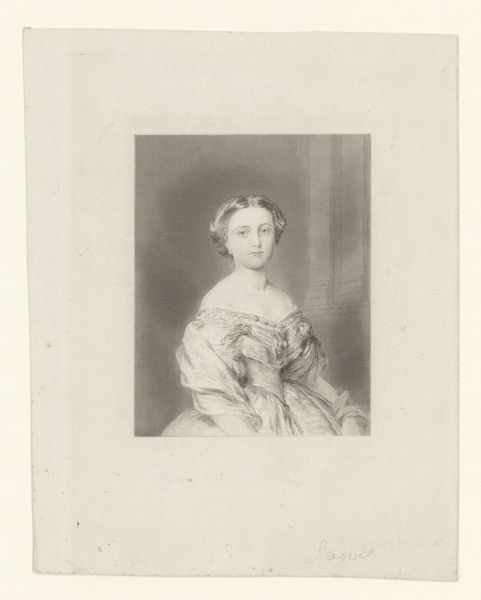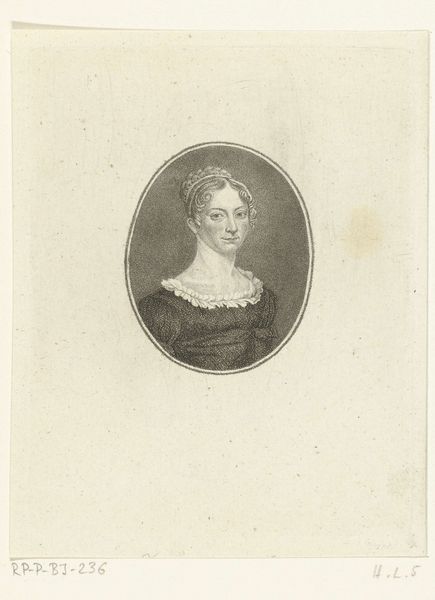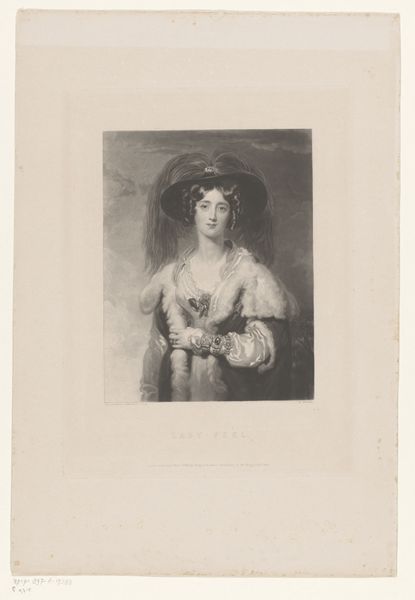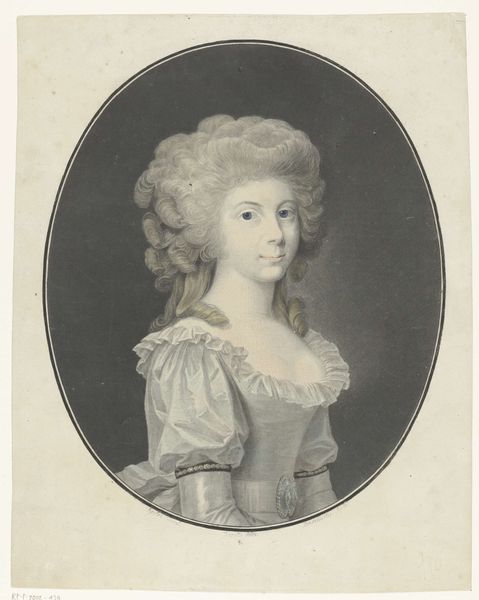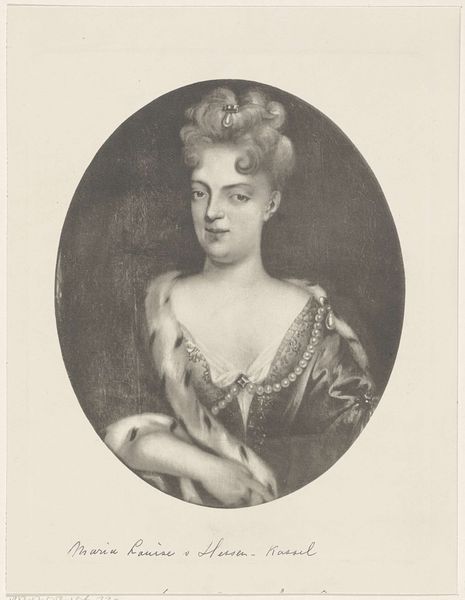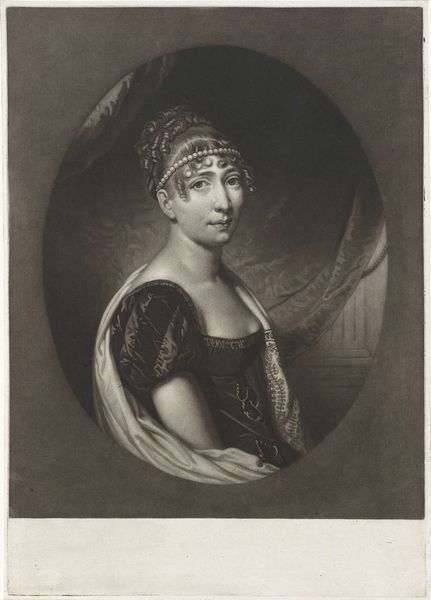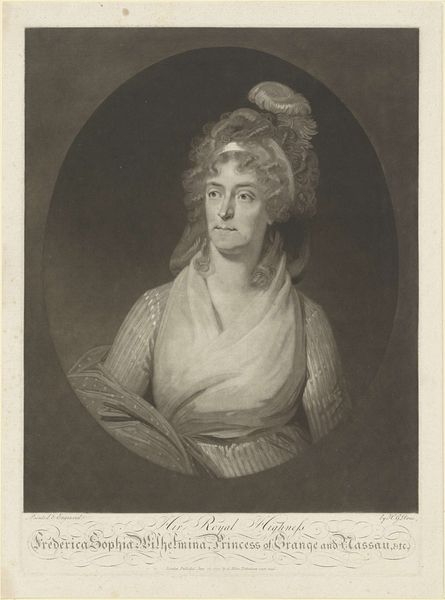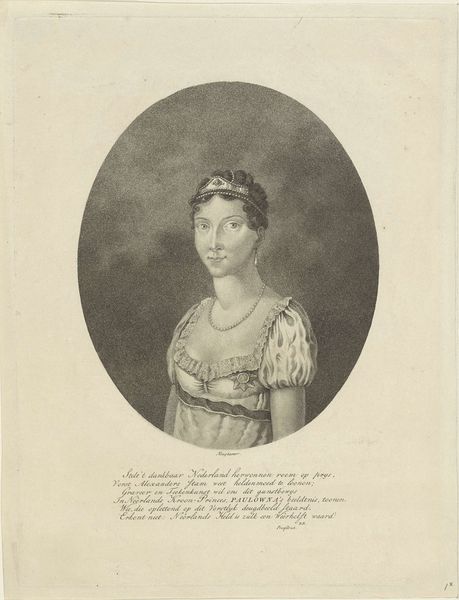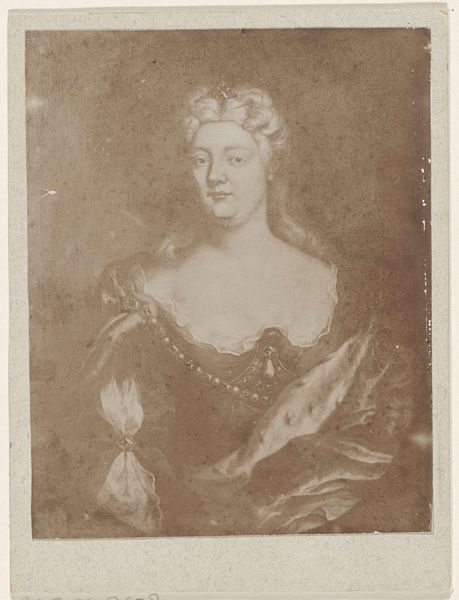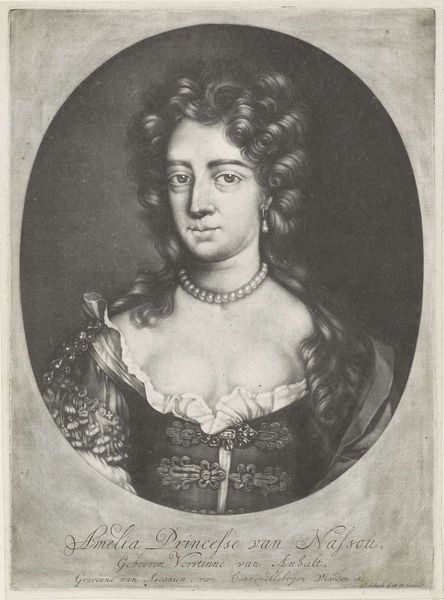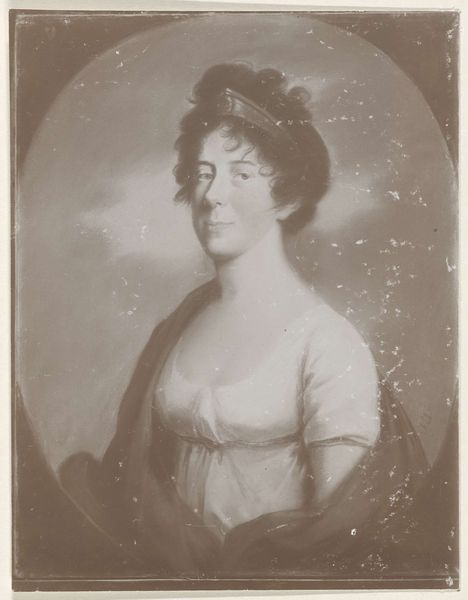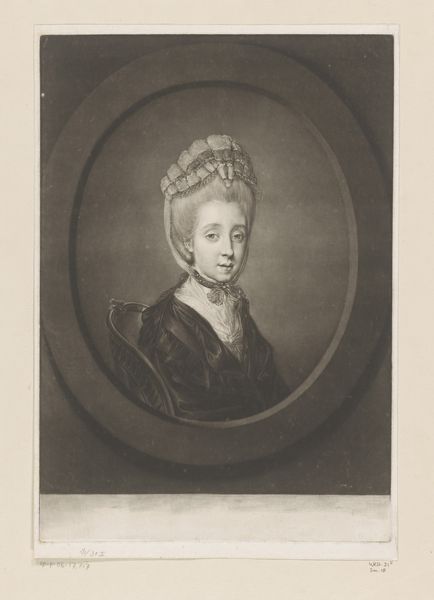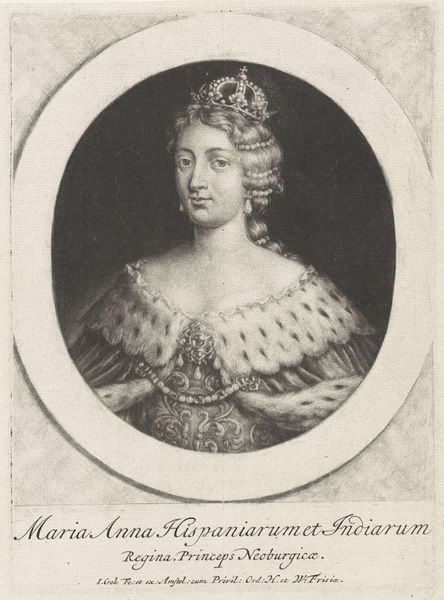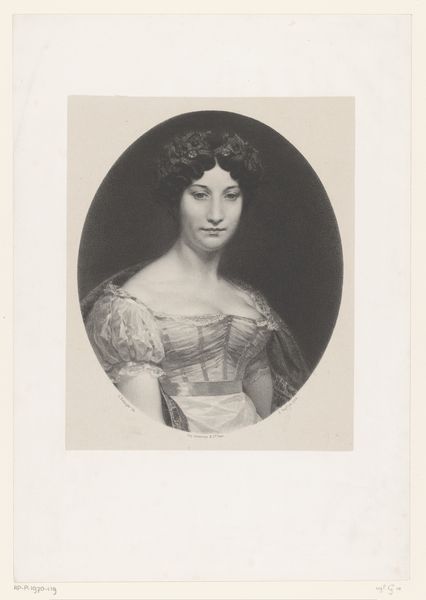
print, engraving
#
portrait
#
neoclacissism
# print
#
old engraving style
#
historical photography
#
history-painting
#
academic-art
#
engraving
Dimensions: height 285 mm, width 214 mm
Copyright: Rijks Museum: Open Domain
Curator: Here we have a fascinating print from the Rijksmuseum collection. This is a portrait of Wilhelmina of Prussia, dating from 1813 to 1819, made by Philippus Velijn. Editor: My immediate impression is of an almost spectral quality. The tight oval composition, combined with the greyscale of the engraving, evokes a sense of stillness and formality. Curator: It's a Neoclassical piece, very much in line with the era's focus on idealized representation. Notice how Wilhelmina’s status is projected through symbols of power and grace: the elaborate headdress, the formal attire. She’s not simply a woman, but a representation of Prussian royalty, even duty. Editor: Absolutely, but there's also an interesting tension. The engraving, while technically precise, creates a soft, almost dreamlike effect. The light isn't harsh; it diffuses, almost veiling her features, blurring sharp lines to express volume. The stippling is interesting in terms of mark making—each small dot contributes to this hazy visual impression. Curator: Yes, that subtlety softens the rigidity one might expect from a state portrait. And it connects with wider symbolism of the era. Consider the headpiece—lace framing the face—reflecting power, piety and tradition. These visual markers connect us to the societal ideals of the time. These engravings weren’t just aesthetic objects; they carried political weight. Editor: I'm struck by how Velijn used the limited tonal range of the print to suggest texture, especially in the fabric of her gown. It creates the illusion of depth within such a restrained medium. It reminds me how much semiotics are encoded into this process, where signifiers of social meaning also come into focus with light and dark. Curator: It reveals the image's enduring strength and ability to express symbolic truths of its subject, which is something I personally believe should not be taken for granted. This echoes throughout history as a form of constructed identity that is very telling about cultural aspirations. Editor: Indeed. And for me, the beauty of studying such a work is not simply in the narrative it constructs but also in appreciating how its delicate technical nuances convey emotion.
Comments
No comments
Be the first to comment and join the conversation on the ultimate creative platform.
